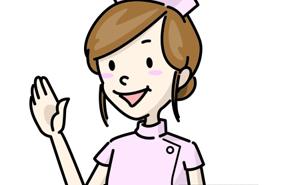

Every year, Cherokee Uniforms holds a scholarship program based on the film. Entrants are asked to write an essay in response to “A Nurse I Am,” and the 10 winners each receive a $2000 scholarship to put toward their nursing education. Here’s one of the winning essays.
3 vows to my future patients
Having witnessed the skill of the nursing professionals in the “Nurse I Am” videos, I see that I have a long way to go toward achieving excellence as I now see it. On top of being moved by the actions of the nurses in this video, I am also inspired to make several vows to myself about how I will strive to provide excellent care and a positive healthcare experience to my patients.
Vow #1: I will always remember that to be a nurse is to, “Treat the whole patient, and not just the diagnoses,” as Ms. Bush said. Keeping this in mind will help me to create a positive healthcare experience for my patients, and to realize that my depressed oncology patient might at times need a foot soak or a wig adjustment more than a methotrexate injection.
I will follow Ardis Bush in her approach to viewing patients as people, and not just an array of symptoms. Though I still have much to learn, I am empowered by the value in providing care while in the pursuit of excellence, and in a profession grounded by the principles of care and compassion.
Vow #2: My patients’ pain management will be top priority, and I will be creative with methods to alleviate it. I went into nursing to play a part in making suffering and pain a bit more bearable for people, and to arm my patients with skills for coping. I am fascinated with the complexity and necessity of pain management, and I’m currently devoting my honor’s research to the nurses’ role in mitigating pain, using both pharmacologic and alternative methods. We hear scattered sound bites about pain management, yet the issue is just so complex.
Our patients deserve more than sound bites, and they need skilled nurses to promote a positive healthcare experience while they are in pain. My goal for excellence is to be able to respond to my patients with real, working suggestions for managing pain in a more cognitive, emotional way, when suffering through another hour before they can take their next hydromorphone pill is not acceptable for them.
Nurse manager Arids Bush from Ben Taub General Hospital in Houston, TX made the point that circumstance is secondary to pain relief. If nurses do not address pain quickly and with equanimity, then they are not doing their jobs.
Ardis Bush is an advocate for her patients even among her own peers. When patients know that someone is looking out for them, they feel less isolated by their suffering, which promotes feelings of satisfaction and well-being. Ardis provided genuine concern and safety for her patient in the video by asking him if he understood what his doctor had told him, and whether he understood the cause of his problems. She made sure that he was a part of his own care, promoting a feeling of control and thus well-being.
Vow #3: I will learn about the needs of my community, and I will strive to be culturally competent within it. Mona Counts, the nurse practitioner in Appalachia, demonstrated first hand how a nurse who is connected to the community that he or she serves is exponentially more effective in providing care to her patients. With nuanced insight into the needs of the community, she stated, “Here in Appalachia, health is function, not just the absence of disease.”
Mona showed genuine concern for her elderly patient with kyphosis by talking with her about standing straight and paying attention to her surroundings, in order to avoid future falls. She managed to make her laugh, and she included the patient’s daughter in her plan of care. If Mona had not immersed herself within the community that she serves, satisfaction and patient well-being would have been harder to achieve.
To promote safety, Mona considered her patient’s daily routine, and ways that her patient could thrive within it. As for excellence in care, this is best demonstrated by Mona’s visit with the gentleman who feared that he might have Alzheimer’s. While still maintaining her connection with the patient, Mona explained to him that the reason why she was administering the formal neurological tests was so that she could get clear results, without her opinion being clouded by the fact that she knew him so well. I consider that to be excellence; knowing when to use a personal touch, and when to rely on systematic methods to ensure accuracy, which eventually results in better patient care.
By Katherine Donovan
Read more inspiring essays by the 2012 winners of A Nurse I Am Scholarship Program here.
Caption:Â Katherine Donovan–University of Massachusetts, Amherst School of Nursing
Sponsored by Cherokee Uniforms
When we discuss students, we always mention their qualities. Those qualities show what they are…
If you or someone you know is juggling mental health issues alongside substance abuse, understanding…
For the last couple of weeks, the Israel-Hamas conflict has taken over the news cycle.…
Our eyes are invaluable, serving as our windows to the world. The ability to see…
Undoubtedly, one of the most demanding and challenging professions is nursing. Nurses work long hours in…
Echocardiography, or echo for short, is a key diagnostic test used by cardiologists to assess…